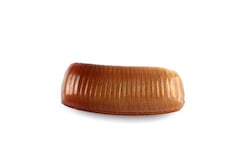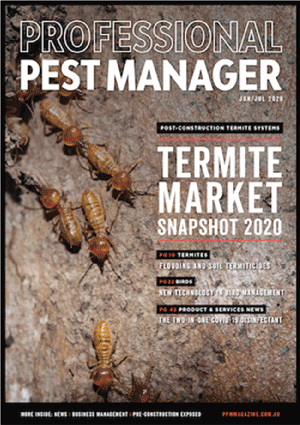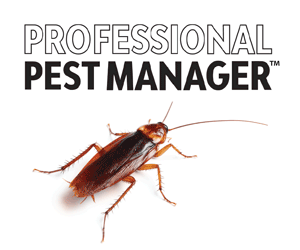Stopping a cockroach infestation before it starts requires a number of preventative steps.
Treating a cockroach infestation is one thing, but how do you go about preventing an infestation in the first place? Certainly, there are the classic IPM measures, in particular hygiene measures, but what treatment procedures are effective for prevention?
It’s important to remember that a cockroach infestation doesn’t happen overnight. The population needs time to develop, especially inside buildings. Cockroach infestations can build relatively quickly inside commercial buildings, where there may be a steady stream of cockroaches coming in from outside. However, infestations can take a lot longer to develop in residential situations, where the establishment of a cockroach population may be reliant on the eggs laid by just one or two cockroaches.
Before considering a treatment, a number of actions can be taken to make the building less attractive to cockroaches and prevent cockroaches entering the building in the first instance. When considering which actions to take, it is also important to remember the key behavioural differences between the main cockroach species.
For the peridomestic cockroach species (American and Australian cockroaches) that live in and around buildings, garbage bins, drains, sewers, and garden beds are their favoured breeding sites. It can be challenging to prevent cockroach populations developing in these locations without a treatment, although good garbage management can help – this means placing garbage in sealed bags and placing in bins with well fitted lids, which should be stored in regularly cleaned locations away from the building.
Also avoid having moist garden beds with wood mulch directly adjacent to the building; pebble mulch and plants in pots are a better option. To keep these large cockroach species out of the buildings, ensure that windows, doors and insects screens are well fitted, with vents and entry points around utility pipes suitably protected.
German and brown-banded cockroaches – which are considered domestic cockroaches, as they only live indoors – are often introduced into buildings by human activity. Cockroaches love boxes and are regularly brought into homes and commercial premises inside boxes. Incoming boxes should be inspected for cockroaches as well as deposited egg cases. It is important to check the cardboard fluting as cockroaches, especially the small nymphs, like to hide in this corrugated cardboard. If you spot an ootheca in a box, it is more likely to be a brown-banded cockroach or one of the large cockroach species that deposit the ootheca as soon as it has developed.
German cockroach females, on the other hand, carry the egg case until just before hatching. For buildings such as unit blocks, which have common pipework connecting the units, cockroaches can potentially move along these conduits between units. However, German cockroaches rarely travel more than two metres from their harbourage.

When it comes to suitable treatments to prevent a cockroach infestation, it is important that a treatment is long lasting, performs against resistant populations and has a safety profile that allows application in a wide range of situations. An IGR such as Sumilarv is the ideal addition to regular spray treatments to prevent cockroach populations developing.
Pyriproxyfen, the active in Sumilarv, is active at very low levels. Importantly, it causes female cockroaches to ‘drop’ their ootheca early, preventing egg development and stopping a potential infestation developing. As pyriproxyfen is a very stable molecule and active at very low levels, it remains active over an extended period. With regular insecticide applications often carried out in commercial accounts, the importance of managing resistance is critical. With no known resistance to IGRs, pyriproxyfen is therefore an ideal partner with whatever adulticide is chosen in the tank mix. As IGRs are only active on insects, pyriproxyfen has a very favourable safety profile making is suitable for use in sensitive accounts. It also allows for use in export meat establishments.
Stopping the development of cockroach infestations requires an IPM approach. In addition to hygiene actions and exclusion techniques, residual sprays applied to breeding areas outside buildings, around the perimeter of buildings and potential hotspots inside buildings target cockroach breeding sites, entry points and potential harbourages. But it’s the inclusion of the trusted IGR Sumilarv in these spray mixes that actually breaks the breeding cycle to prevent populations building up, stopping cockroach infestations before they start.


